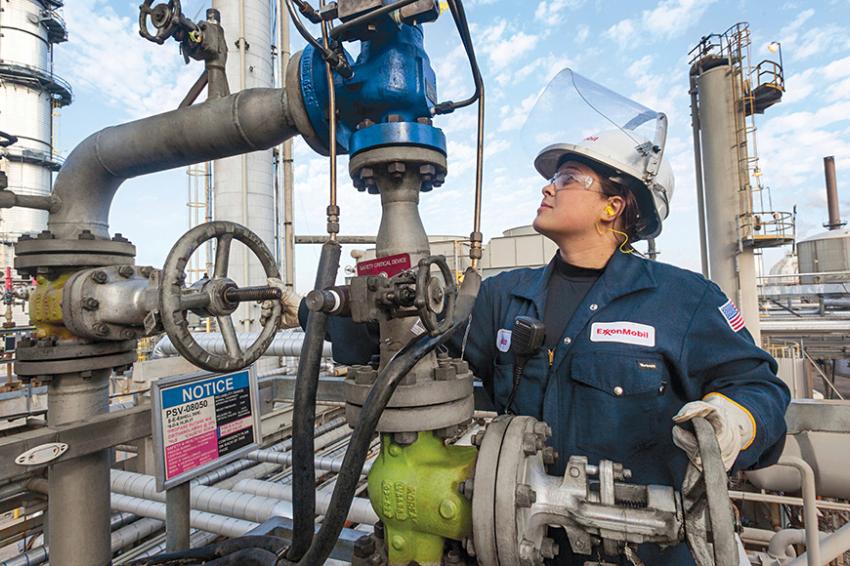ExxonMobil Invests in Carbon Capture at US Sites
At the Baytown integrated refining and petrochemicals site, ExxonMobil is to build what it claims will be one of the world’s largest CCS projects, as well as a blue hydrogen plant producing up to 1 billion ft3 per day. Blue hydrogen is that produced from natural gas and supported by CCS. The carbon capture infrastructure for the project will be able to transport and store up to 10 million t/y of CO2, more than doubling ExxonMobil’s existing capacity.
The multinational energy and chemicals giant said using hydrogen as a fuel at the Baytown olefins plant could cut the complex’s Scope 1 and 2 CO2 emissions by up to 30%. It would also enable the site to manufacture products with lower-emissions for customers and make available surplus hydrogen and CO2 storage capacity to industry nearby.
The project would also form the group’s initial contribution to a broad, cross-industry effort to establish a Houston CCS hub, with an early target of about 50 million t/y of CO2 by 2030, rising to 100 million t/y by 2040.
ExxonMobil said project evaluation and planning are ongoing and it expects to take a final investment decision in two to three years, subject to stakeholder support, regulatory permitting and market conditions.
Last month, the company made a final investment decision to expand CCS capacity at LaBarge. The project will add up to 1.2 million t/y of CO2 capture to the 6-7 million t/y already trapped at the site.
A contract for engineering, procurement and construction work is expected to be awarded this month – front-end engineering and design work was completed last December. Start-up is estimated in 2025, pending regulatory approvals.
In January, ExxonMobil established its Low Carbon Solutions business to commercialize low-emission technologies, with an initial focus on CCS, hydrogen and biofuels. The company plans to invest more than $15 billion in lower-emission initiatives over the next six years.
Russian exit
In response to the Russian invasion of Ukraine on Feb. 24, ExxonMobil has announced it is taking steps to exit the Sakhalin-1 oil and gas venture, which is valued at more than $4 billion, adding that it will not invest in new developments in Russia.
The facilities on Sakhalin Island in Russia’s Far East are operated in partnership with Rosneft, Japan’s Sakhalin Oil and Gas Development Co (Sodeco) and Indian state-owned oil company ONGC Videsh. The consortium had been planning to build a multi-billion LNG terminal at the site.
ExxonMobil’s planned exit follows identical moves by BP, Shell and Equinor in the past few days. France's TotalEnergies will also no longer provide capital for new projects in Russia and will implement any European sanctions "regardless of the consequences" on its Russian activities. However, it has not committed at this stage to withdraw from its Russian joint ventures or assets.
Author: Elaine Burridge, Freelance Journalist





